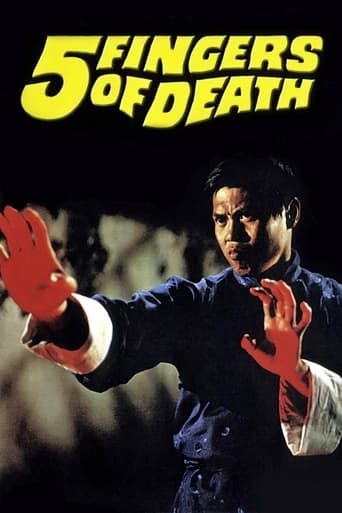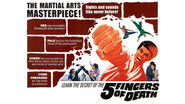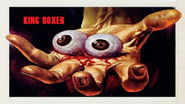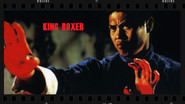alexanderdavies-99382
"King Boxer" was the first Kung Fu movie that was released to Western audiences before "Enter the Dragon" was to eclipse it. The martial arts scenes are amongst some of the greatest I've ever seen and more violent than the usual. A young up and coming martial artist leaves home so he can join a Kung Fu school to learn a particular style and to take his place amongst the elite. Naturally, he won't achieve this without first being subjected to various experiences. These include having his hands tied to a tree and having them beaten black and blue. There is the usual rivalry between various schools and this paves the way for some exciting fight sequences, including those involving about two dozen or more martial artists. There is a very good scene involving a martial arts tournament. It is probably better to watch the Cantonese version but the English dubbed one is quite good.
A minor masterpiece to be sure!
A_Different_Drummer
When you do the math, you will find that, prior to Bruce Lee, there were very few avenues for westerners to discover the "kung fu" production line films being cranked out of Asia by companies like Shaw Brothers (and others). The only way I am aware of was being fortunate enough to live in a cosmopolitan city with a substantial Asian population, which, generally, gave you access to theatres playing these films. And EVEN THEN the subtitles accompanying these films were in every conceivable language EXCEPT English! Which in turn meant that plots were optional for the dedicated Kung Fu or Wushu fan. This film in 1972 changed all that. Understand there is nothing "special" about this film. Pretty standard plot, pretty standard cast, pretty standard quality. Even the "iron palm" technique is not new and would pop up in these films every few years. (Based of course on real ancient texts -- I recall a Youtube video of an actual Iron Palm practitioner, in real life your hands double in size because of the constant bruising and healing). So what makes this film special? It was the first film of its type to be "tested" in the N.A. release channel to see if there was a market for a typical product from Asia, dubbed. Did it work? Do bears (^(++ in the woods? Many more followed and ultimately the western studio saw a market they missed, leading to films with Chuck Norris, Steven Seagal, and many more..
winner55
Five fingers of death: Although previous Shaw Martial Arts epics had shown the influence of the American cowboy genre, none had paid such open tribute to it as this one, especially in the saloon fight scene. And though Shaw Bros. films had borrowed from the Japanese chambara (swordfight) genre before, none had done so with such success as this one. i suppose some of this had to do with the fact that the director originated from Korea, and thus brought a non-Chinese perspective to such borrowings, which certainly raises some interesting questions about culture; but in any event, this film presented real innovations in technology and technique in Hong Kong action films. for the first time in Hong Kong, the camera was given access to the whole of any given set, which meant shots from many different angles, such as the low-angle interior shot showing the ceiling of a room (the original American innovation of which usually credited to John Ford), or the high angle long shot that allowed visualization of a large ground area, or the frontal tracking shot.It is true that this was not the first hand-to-hand combat film of real cinematic substance - that remains Wang Yu's 'Chinese Boxer'; but on a commercial level, Shaw Bros. were right to choose 'Five Fingers' as their first major release to the West because, one might say, it was the 'least Chinese' of their action films, that is, the least dependent on purely Chinese theater traditions. Although this made no impression on the American critics at the time (who universally trashed the picture), it wasn't lost on American audiences, especially among African Americans, whose culture had always been - by necessity - an eclectic patchwork of borrowed elements and innovation. In 'Five Fingers' they were given the opportunity to discover the core of the story, in the earnest young man forced to make the extra effort to overcome social barriers and betrayal in order to have his merit recognized. This seems to be an issue universal to Modernity, but each culture has its own way of expressing and resolving it; 'Five Fingers' presented it in a way many Americans could relate to as well as Chinese.So is the film now only of historical value? Certainly not. For one thing this issue hasn't gone away. Secondly, some of the innovations leave much of the film looking as fresh today as it did on first release. Also the action is well-staged, and the performances, though a little too earnest, are crisp. The film is a might over-long, but the story does cover a lot of ground. And there are marvelous set-pieces through-out, such as the saloon confrontation, the fight on the road to the contest, the odd double finale.definitely looks better on a theater screen, but still impressive for home viewing: recommended.
bart-117
"Five Fingers of Death" is a classic of 70's kung fu cinema. As the film that "broke out" HK cinema to the west, this is a must see for any serious fan of the genre. It's also a damn entertaining film, with hard-hitting, non-stop action, solid and mostly believable fight choreography and great over-the-top 70's era dubbing ("Oh I see ... so you want it THE HARD WAY!! HWAA!!")."Five Fingers" is an eye-for-an-eye revenge tale ... and I mean literally, eye for an eye! It's great to see Lo Lieh portraying a hero. He played so many great villains later in his career - including Pai Mei in the classic FIST OF THE WHITE LOTUS, which was one of the characters Tarantino used in creating the Pai Mei of KILL BILL.My only complaint is that I wish there was a better quality DVD - mine looks like it was a VHS transfer. Overall this is a great film - don't miss it!Bart Blackstone Film Club - Hollywood, CA


 AD
AD






